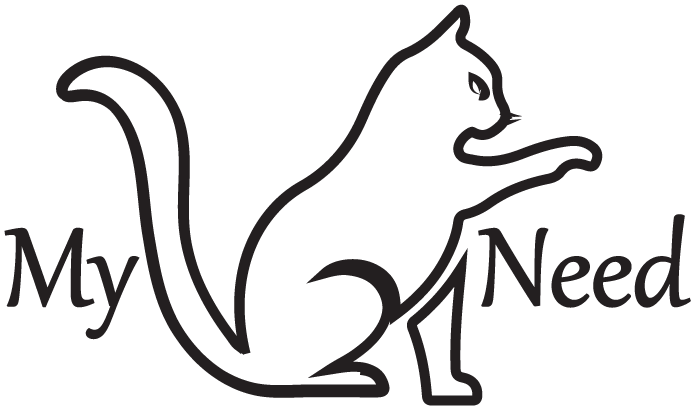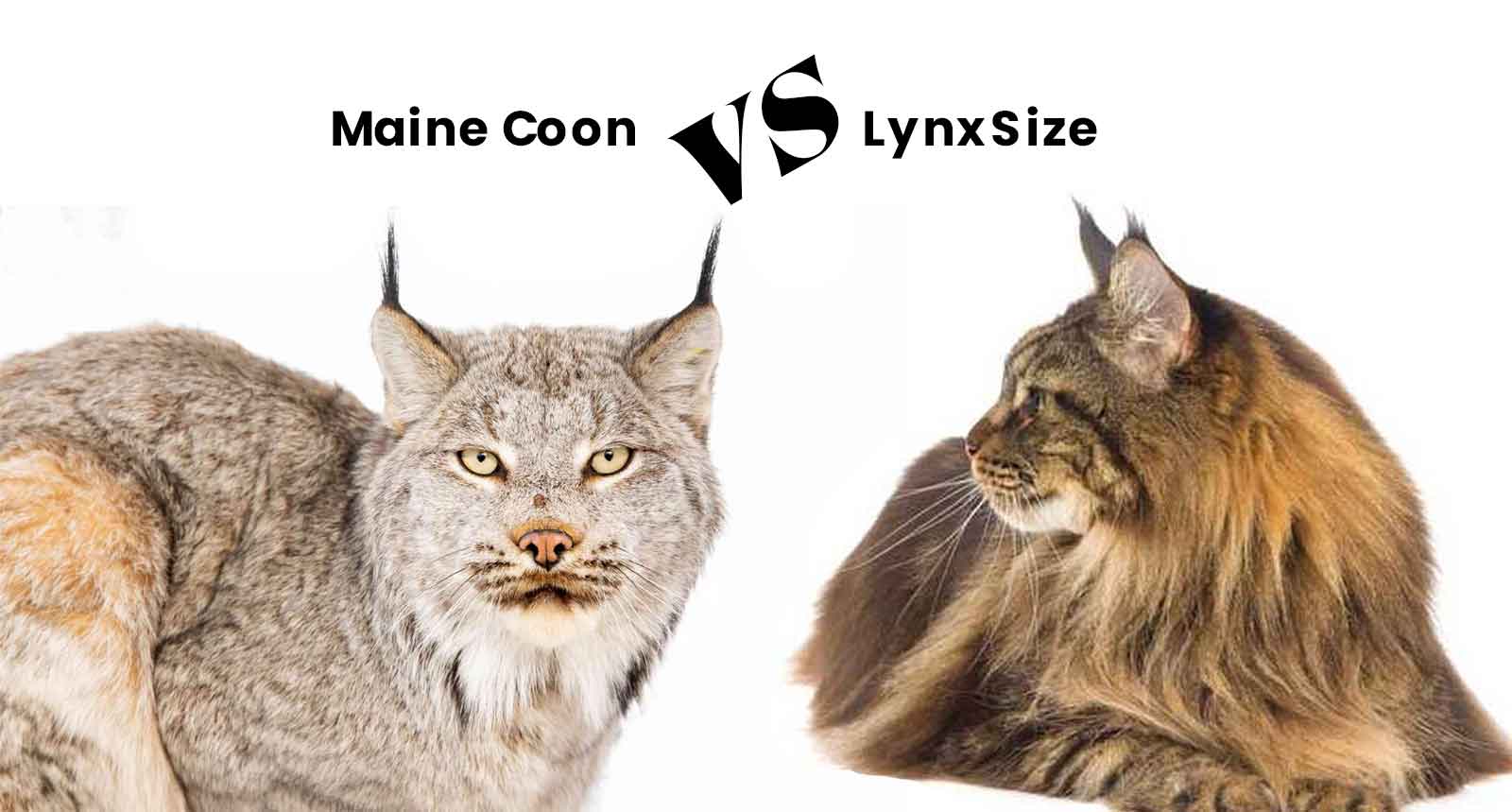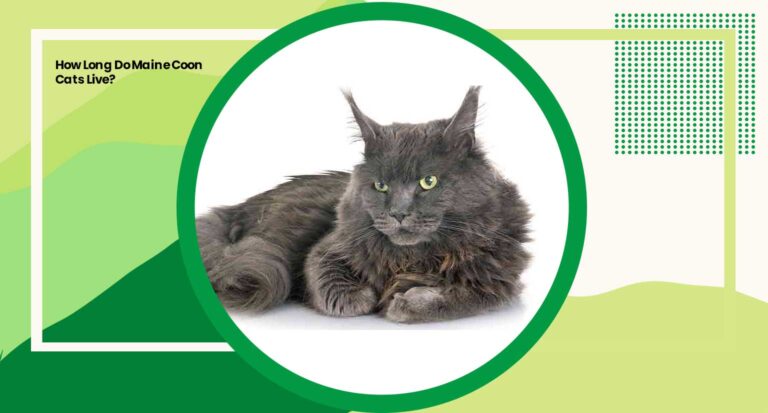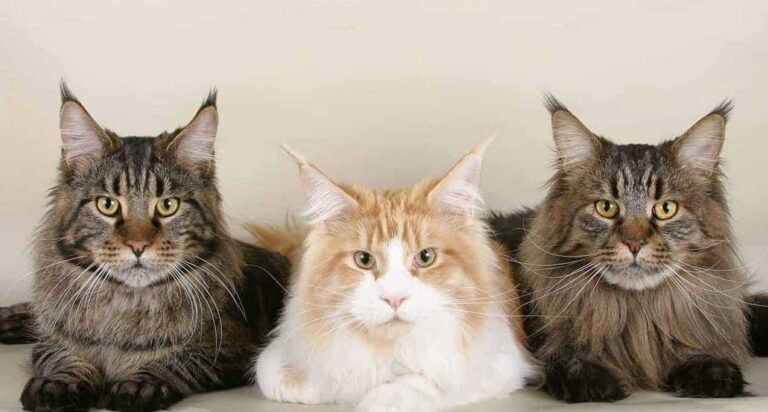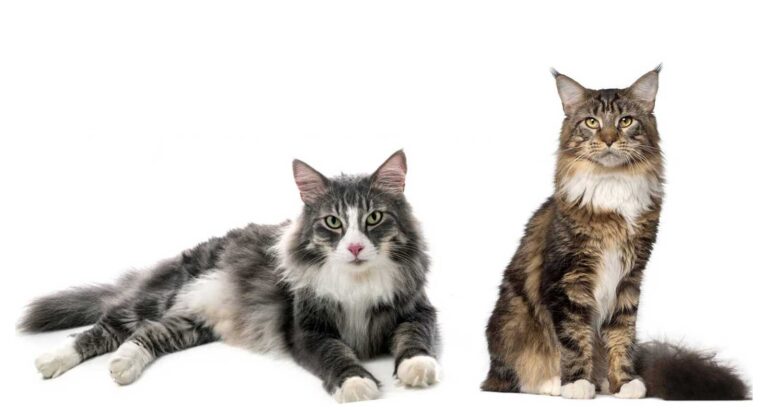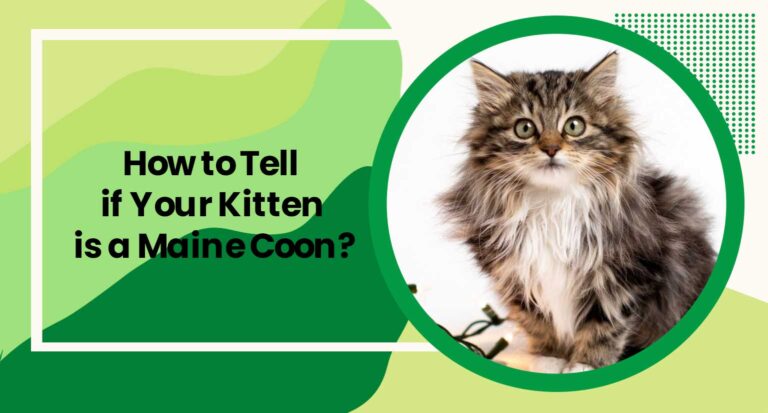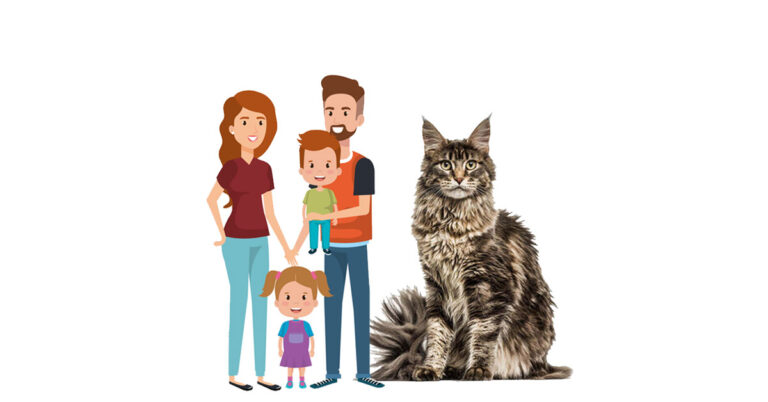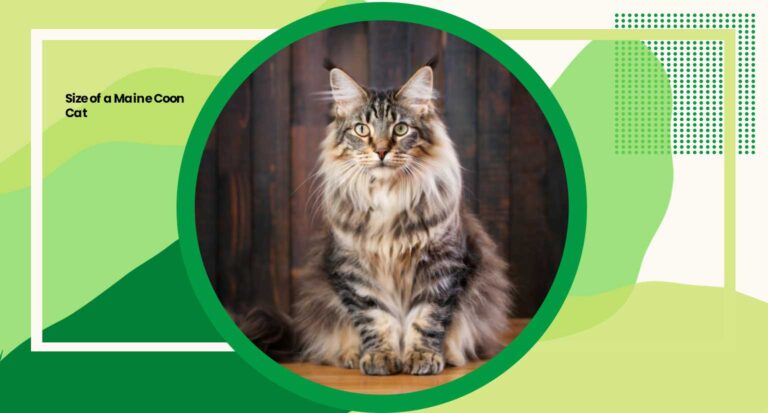Maine Coon vs Lynx Size
When I first began my journey into the world of feline wonders, I couldn’t help but be captivated by the sheer diversity in cat species.
Two magnificent creatures, the Maine Coon and the Lynx, have always piqued my curiosity. What truly sets them apart, among many other intriguing factors, is their size.
In this article, we’ll delve into the remarkable disparities in size between these two remarkable feline species, the Maine Coon vs Lynx size.
Let’s embark on this exploration of size, strength, and stature in the world of cats.
Maine Coon Size
When it comes to the world of domestic cats, the Maine Coon stands out as a true giant among them. These cats are renowned for their impressive size and imposing presence.
Majestic Giants
Maine Coons are often described as the “gentle giants” of the cat world, and for a good reason. On average, adult Maine Coons weigh between 13 to 18 pounds (5.9 to 8.2 kilograms) for males and slightly less for females. However, some exceptional individuals can tip the scales at over 25 pounds (11.3 kilograms).
One of the distinguishing features of Maine Coons is their remarkable length. These cats can stretch anywhere from 19 to 40 inches (48 to 101 centimeters) from nose to tail.
Their long, sturdy bodies and robust bone structure contribute to their impressive size, making them a standout breed in the feline kingdom.
Lynx Size: Wild and Compact
In contrast to the Maine Coon’s domestic grandeur, the Lynx represents the untamed wilderness. Lynx are wild cats known for their agility and adaptability to various environments.
Unlike their domestic counterparts, they are smaller in size but no less intriguing.
Wild and Compact
The size of a Lynx can vary depending on the species. The Eurasian Lynx, for example, typically measures around 32 to 40 inches (81 to 101 centimeters) in length and weighs between 40 to 88 pounds (18 to 40 kilograms).
On the other hand, the North American Lynx, also known as the bobcat, is somewhat smaller, with lengths ranging from 28 to 41 inches (71 to 104 centimeters) and weights averaging between 11 to 36 pounds (5 to 16 kilograms).
In the world of size comparisons, Maine Coons and Lynx present a striking contrast. Now, let’s explore the factors contributing to these size differences and what they mean for these magnificent feline species.
Physical Characteristics
When comparing the physical characteristics of the Maine Coon and the Lynx, their size is just one aspect. Let’s delve deeper into their distinctive features.
Ears and Paws
Maine Coon
Maine Coons are known for their tufted ears, which are a distinctive feature of the breed. Their large, pointed ears give them an alert and majestic appearance.
In addition to their striking ears, Maine Coons have large, tufted paws that provide stability and balance, particularly useful for navigating their substantial size.
Lynx
Lynx, whether Eurasian or North American, have tufted ears as well. These tufts are thought to serve as sensory tools, helping them detect subtle movements and sounds in their natural habitats. Their paws are adapted for stealth and hunting, with retractable claws that give them an advantage in capturing prey.
Fur and Coat
Maine Coon
Maine Coons boast luxurious, semi-long fur that is soft to the touch. Their coats come in a variety of colors and patterns, with tabby being a common pattern among them. This dense fur serves as insulation, ideal for cold climates.
Lynx
Lynx, in contrast, have shorter, dense fur that varies in color depending on the species. Their fur provides effective camouflage in their respective environments, helping them blend into the wilderness while they hunt.
Body Structure
Maine Coon
Maine Coons have muscular, rectangular bodies with a sturdy bone structure. Their broad chests and long, bushy tails add to their overall imposing appearance.
Lynx
Lynx, especially the bobcat, have more compact bodies designed for agility and stealth. They have shorter tails and a leaner physique, which aids them in navigating through dense forests.
Traits and Appearance
Known for their friendly and sociable nature, Maine Coons have a distinctive appearance characterized by their prominent, expressive eyes and a gentle expression. Their friendly disposition makes them popular as household pets.
Lynx are elusive and solitary creatures, with piercing eyes and an intense gaze. Their appearance reflects their wild and independent nature.
Comparison with Other Breeds
Comparing Maine Coons and Lynx to other breeds is an interesting exploration. While Maine Coons are among the largest domestic cat breeds, Lynx represent a diverse group of wild cats, each adapted to its unique habitat.
Adaptation to Climate
Maine Coons and Lynx have adapted to their respective climates in remarkable ways. Maine Coons thrive in cold climates, thanks to their substantial fur and robust build, while Lynx species are adapted to various climates, from the snowy forests of the north to the arid deserts of the south.
Understanding these physical characteristics and adaptations sheds light on the fascinating world of Maine Coons and Lynx, both of which showcase the incredible diversity within the feline family.
Maine Coon Health
Both Maine Coons and Lynx are robust and hardy creatures, but like all living beings, they are not without their health concerns. Here, we’ll delve into some of the health issues that can be associated with their respective sizes.
Maine Coons, known for their impressive size, may be prone to certain health concerns associated with their stature:
Obesity
Due to their larger size, Maine Coons are susceptible to obesity if not provided with a balanced diet and regular exercise. Obesity can lead to various health issues such as diabetes and joint problems.
Hip Dysplasia
Their large frames can make them more prone to hip dysplasia, a genetic condition where the hip joint doesn’t develop properly, leading to mobility issues.
Hypertrophic Cardiomyopathy (HCM)
Maine Coons are also predisposed to HCM, a heart disease that can affect cats of all sizes. Regular veterinary check-ups are crucial for early detection and management.
Lynx Health
Lynx, while smaller in size compared to Maine Coons, face their own set of health challenges:
Starvation in Harsh Winters
Lynx, especially the Eurasian Lynx, may face food shortages during harsh winters when their prey is scarce. This can lead to malnutrition and weakened immune systems.
Parasitic Infections
Lynx in the wild are at risk of various parasitic infections, including internal parasites like tapeworms and external parasites such as ticks and fleas. These can impact their overall health and survival.
Injuries from Hunting
Lynx rely on their agility and hunting skills to catch prey. In the process, they can suffer injuries like sprains, strains, or even broken bones.
It’s important to note that proper care and attention, whether in domestic settings or in the wild, can mitigate many of these health concerns.
Regular veterinary care, a balanced diet, and an environment that supports their natural behaviors are essential for the well-being of both Maine Coons and Lynx, regardless of their size. Understanding their unique health challenges allows us to provide the best possible care for these majestic creatures.
Behavior and Personality
Understanding the behavior and personality of Maine Coons and Lynx is key to appreciating their unique qualities and the impact of their size on their demeanor.
Maine Coon Behavior and Personality
Maine Coons, often referred to as “gentle giants,” have distinctive behavior and personality traits:
Affectionate
Maine Coons are known for their affectionate nature. They often form strong bonds with their human companions and enjoy spending time with them. Their larger size doesn’t diminish their capacity for love and attachment.
Playful
Despite their size, Maine Coons maintain a playful and kitten-like demeanor throughout their lives. They’re known to enjoy interactive play and can be quite entertaining.
Social
These cats are typically social and friendly, getting along well with children and other pets. Their gentle disposition makes them excellent family companions.
Vocal
Maine Coons are often vocal and communicate with a variety of chirps, trills, and meows. They may even “talk” to their owners, engaging in conversations.
Lynx Behavior and Personality
Lynx, being wild and elusive creatures, exhibit behavior and personality traits shaped by their environment:
Solitary
Lynx are solitary animals. They prefer a solitary lifestyle and only come together during mating season. Their independence is a crucial part of their survival strategy.
Territorial
Lynx are highly territorial and mark their territories with scent markings. This territorial behavior helps them avoid conflicts with other Lynx.
Nocturnal
Lynx are primarily nocturnal, meaning they are most active during the night. This behavior aids them in hunting and evading predators.
Cautious
Lynx are known for their cautious and stealthy nature. They are skilled hunters and rely on their sharp senses to stalk and capture prey.
Mysterious
Due to their elusive behavior, Lynx are often regarded as mysterious and enigmatic creatures, rarely seen by humans in the wild.
While Maine Coons are known for their affectionate and social personalities, Lynx exhibit a more solitary and elusive nature.
The influence of size on their behavior lies in how they adapt to their respective roles, whether as loving companions in the case of Maine Coons or as secretive hunters in the wild for Lynx. These differences in behavior and personality add to the allure of these two remarkable feline species.
History and Origin
Understanding the historical backgrounds of the Maine Coon and Lynx provides valuable insights into their evolution and development as distinct species.
Maine Coon History and Origin
Maine Coons have a fascinating history rooted in North America:
Origin Story
The Maine Coon is believed to be one of the oldest natural cat breeds in North America.
While their exact origin remains a subject of debate, one popular theory suggests that they descended from long-haired domestic cats brought by seafarers to the New England region in the 19th century.
Natural Adaptation
Surviving harsh New England winters, Maine Coons naturally developed their substantial size, thick fur, and tufted ears through adaptation to the cold climate.
Recognition
The Maine Coon breed was officially recognized by the Cat Fanciers’ Association (CFA) in the United States in the 1970s. Since then, they have become beloved as both working cats and cherished companions.
Lynx History and Origin
Lynx represent a group of wild cats with a rich evolutionary history:
Evolutionary Roots
Lynx belong to the Felidae family and are distant relatives of domestic cats. They have a long evolutionary history, dating back millions of years.
North American Lynx
The North American Lynx, also known as the bobcat, is native to North America and has adapted to various regions across the continent. Their presence in North America predates European settlement.
Eurasian Lynx
The Eurasian Lynx is found in Europe and Asia and is one of the largest Lynx species. It has a deep history intertwined with the folklore and cultures of its range.
Conservation Status
Some Lynx species, such as the Iberian Lynx, have faced serious threats to their survival due to habitat loss and hunting. Conservation efforts are ongoing to protect these majestic creatures.
Maine Coon’s history is relatively recent, with its development as a breed tied to the challenging conditions of colonial North America.
On the other hand, Lynx have a much longer evolutionary history, with various species adapting to diverse environments across the world. Understanding their origins adds depth to our appreciation of these remarkable feline species.
Maine Coon Myths and Misconceptions
Myth 1: Maine Coons Are Part Raccoon?
-Reality: Contrary to the name, Maine Coons are not a crossbreed between cats and raccoons. This myth likely arose due to their bushy tails and tufted ears. Maine Coons are purely domestic cats with a unique history.
Myth 2: Maine Coons Are Aggressive Due to Their Size?
-Reality: Maine Coons are often described as gentle giants. Their size does not make them aggressive. In fact, they are known for their friendly and sociable nature, making them great companions for families.
Myth 3: All Maine Coons Are Enormous
-Reality: While Maine Coons are one of the largest domestic cat breeds, their size can vary. Not all Maine Coons reach the same impressive proportions, and individual cats may be smaller or larger than the breed average.
Lynx Myths and Misconceptions
Myth 1: Lynx Are Dangerous to Humans?
-Reality: Lynx, including the North American Lynx (bobcat), are typically shy and avoid human contact. They are not considered a significant threat to humans and rarely attack unless cornered or provoked.
Myth 2: Lynx Are the Same as Bobcats?
Reality: While the North American Lynx is often referred to as a bobcat, they are distinct species with some differences in size and behavior. Eurasian Lynx and Canadian Lynx are other Lynx species with unique characteristics.
Myth 3: Lynx Are Endangered Everywhere?
Reality: While some Lynx species, like the Iberian Lynx, face critical endangerment, not all Lynx species are in the same situation. Conservation efforts vary depending on the region and species, with some populations stable or even expanding.
Myth 4: Lynx Are Exclusively Nocturnal?
Reality: While Lynx are primarily nocturnal, they can be active during the day, especially in regions with less human disturbance. Their activity patterns can vary based on factors like food availability.
Clearing up these myths and misconceptions allows for a more accurate and informed understanding of Maine Coons and Lynx, fostering a deeper appreciation for these remarkable feline species.
